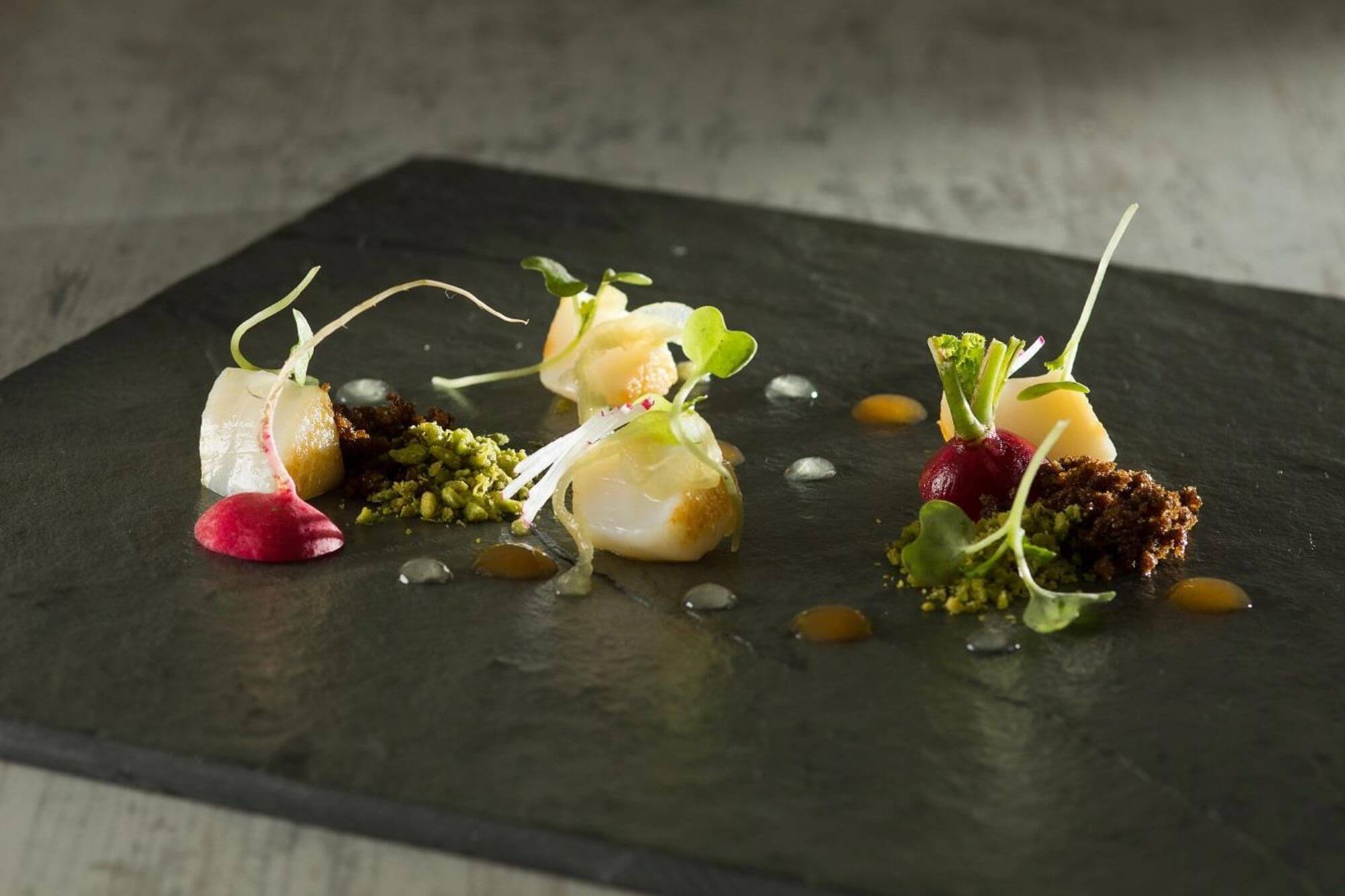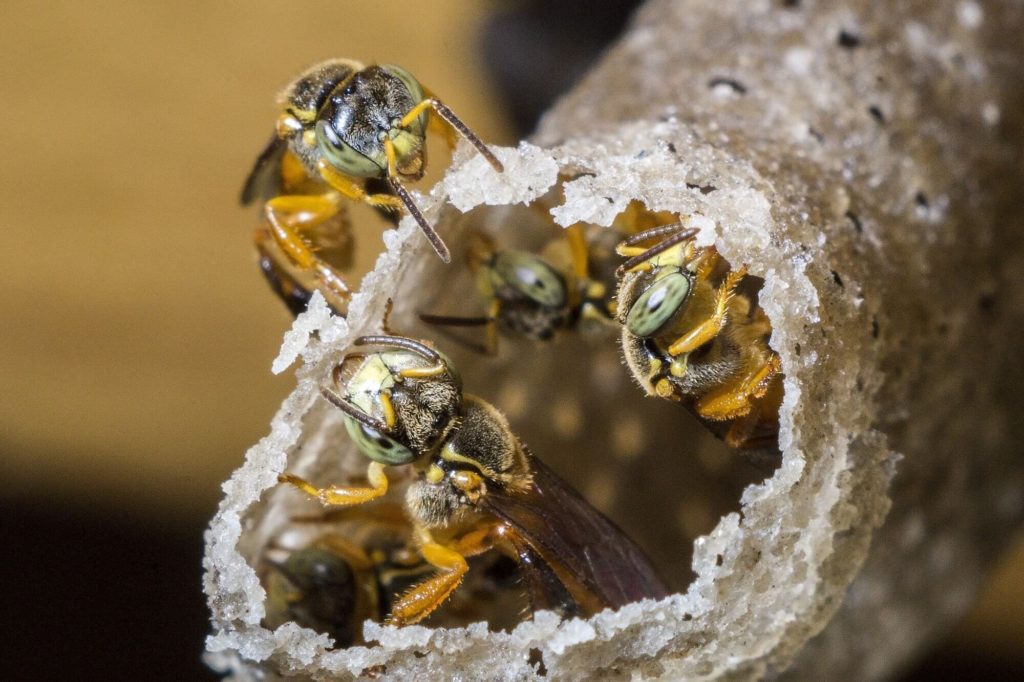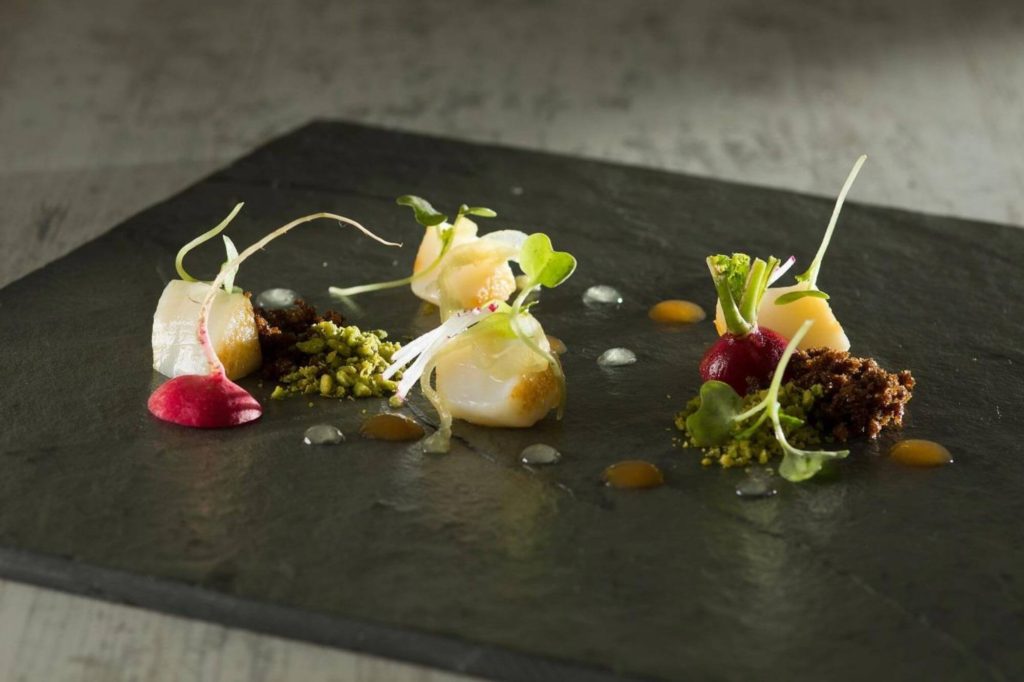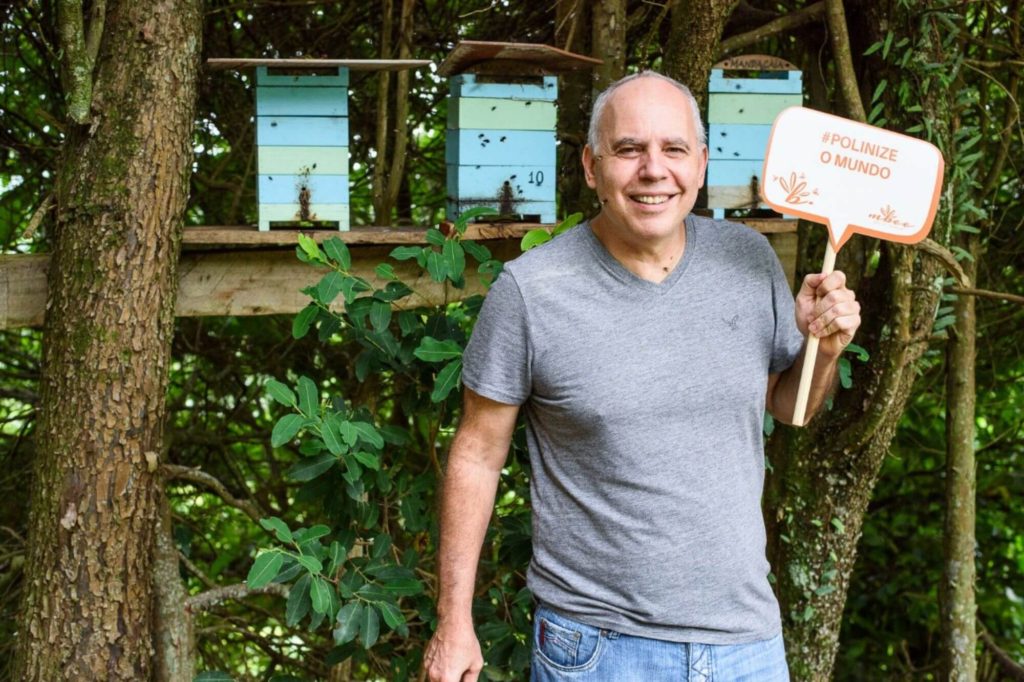
Native bees and haute cuisine
Check out this news published by Revista FORBES where the use of stingless bee honey as an ingredient in haute cuisine restaurants in the State of São Paulo is discussed..

The word "bee", typed in Google, brings dozens of very similar images: are winged beings, almost always including as features a yellow striped abdomen and at the end of it the fearsome stinger, many people's nightmare. But its main feature is the diversity. There are about 20 thousand species in the world, wherein 300 don't have these stingers. "We want to break the stigma that the bee is dangerous and that its honey serves only as medicine", saysEugenio Basile, 58 years, that together with the wifeMarcia, 56 years, founded theMbee, company that sells and distributes honey from a stinging bee species, aApis mellifera, and others 12 stingless species, also callednative bees.
With them, more than creating these insects and processing the honey, the couple is educating the consumer by taking something new to the world of haute cuisine in the city of São Paulo: the honey, and native stingless bees, are going into the restaurants, in exclusive spaces dedicated to them. How notEvvai, Italian cuisine, one of the nine restaurants in the capital starred in the famous French Michelin guide. The honey, ingredient of varied recipes, shines on the menu with delicacies like “native bee honey bread”.
Of the species created by Mbee, jataí is the flagship of the consumer education project, because it adapts to the urban environment. For this, just use a wooden box to house the swarm of bees. “There is no difficulty in raising this type of bee. The box is placed in a wooded area and the bees do the rest of the work ”, affirms Basile. With the project to popularize cultivation in the city, started in 2019, Mbee has already spread 45 boxes by neighborhoods like Vila Madalena, Pinheiros and Barra Funda. They are located in areas outside the restaurants and staff at the establishment receive instructions on how to collect the honey.. “Many countries have special items for gastronomy. Italy has white truffle and Brazil has honey from its native bees ”, says the meliponicultor.

Famous chefs have already realized the value of these animals and have surrendered to them, WhatAlex Chapter, who runs houses like the DOM and Dalva and Divo; Bel Rabbit, clandestine chef; and from ParanáManoella Buffara, do Manu. “Honey from Jataí bees has a more acidic characteristic, a more fluid texture, very golden color, very tasty and aromatic ”, explains Manoella to Forbes. “We have already used jataí honey in many dishes from Manu. currently, we use in the butter we make in the restaurant and to marinate raw fish. This honey is smooth and very versatile and can be used in different recipes, as salad dressing with fish carpaccio. ”
The ingredient can bring a lot of Brazilianness to the dishes, but domestic consumption is small, being one of the smallest in the world. There are about 0,07 kilos per capita per year, while in countries like Germany consumption exceeds one kilo and in the United States it is 0,6 kilos per capita year. According to Etene (Technical Office of Economic Studies of the Northeast), department of Banco do Nordeste, where is the largest producing region in the country, “A large part of the Brazilian population perceives honey as a medicine, being one of the main factors that explain the low consumption of this product in the country ”. Hence the importance of projects in showing bees as part of the cuisine, because there is potential for growth of honey as a food. Etene's study also points out that “the Brazilian honey consumer has a higher purchasing power, and, therefore, demanding on hygiene standards, nutritional values and practicality ”.
Native bee farming on the farm
Mbee's production is on the Itaicá farm, from 210 hectares, in the municipality of Atibaia, about 70 kilometers from the capital of São Paulo. Creation started in 2014 and represented a life change for the Basile couple. "Márcia started working with Mbee shortly after closing her handmade shoe factory", Basile explains. "At the same time, he discovered the potential of the farm for the cultivation of bees and began to dedicate himself. ” The other option for bees, if they had not found the vocation of the land, would have been your sale. Today, beyond bees, Basile plants eucalyptus and raises cattle half blood angus.

In 2020, Mbee produced 1.500 pounds of honey from native stingless bees. In addition to the native, production also included 120 thousand pounds of honey from Apis. The volume has been constant in recent years. The difference in production from one cycle to the next is determined by native species, more than any other factor. “It is not possible to grow native bees on a large scale and with machinery, because they require special care ”, says Basile. “It is a high-value gastronomic ingredient that will always be made by smaller producers”.
In addition to the value for food, Basile points out that “although Apis honey is the most produced in Brazil, native bees are of immense importance to our ecosystem ”. According to one of the greatest scholars on bees, the geneticist, agronomist and professor at the University of São Paulo, Warwick Kerr, deceased in 2018, native stingless insects are responsible for pollinating up to 90% of Atlantic Forest species. "Now, in old age, after so much that we have already achieved in life, we want to give back to the world everything we have gained through this work ”, says Basile. "We want to bring visibility to the importance of bees to the ecosystem and their value for haute cuisine."

Sorry, the comment form is closed at this time.